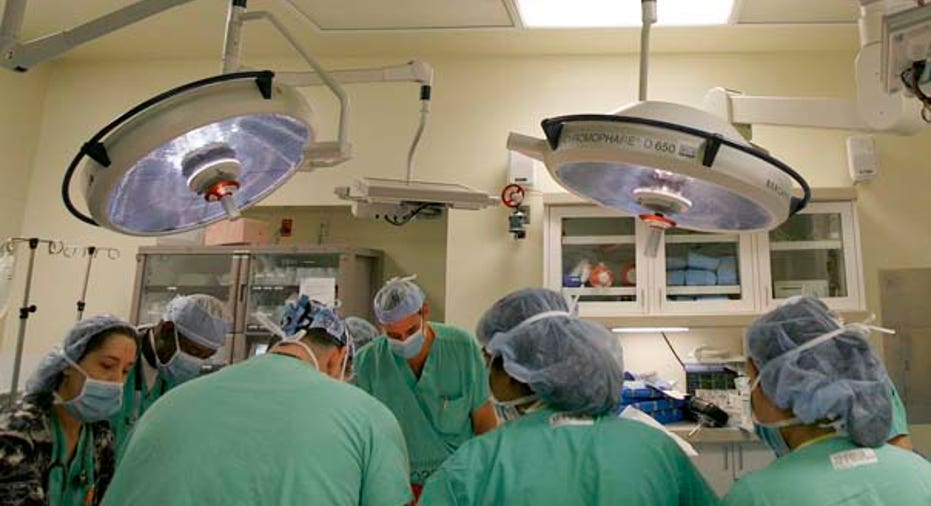Help for Soldiers Coping With Traumatic Brain Injury

Improved body armor and helmets, evacuation techniques and much enhanced combat care have reduced mortality rates in recent wars. If there’s any good news to wring out of war, this is it. This benefit, however, is not without its challenges—and traumatic brain injury (TBI), a signature injury of the wars in Iraq and Afghanistan, is the silent epidemic at the heart of it.
“We’re saving lives that are at risk for neurologic, psychiatric and medical problems,” says Dr. Matthew Friedman, executive director of the United States Department of Veterans Affairs National Center for Post-Traumatic Stress Disorder (PTSD).
Read part one of the series: Growing Threat to Soldiers: Traumatic Brain Injury
Friedman says the Department of Defense and the Department of Veterans Affairs have been very responsive and have made significant headway in the area. Over the past three-to-five years, research has produced solid scientific evidence and conclusions that inform clinical practice.
Immediate Protocols
Today, soldiers who are within a certain radius from the blast are removed from battle and evaluated repeatedly for their fitness to return to combat. If a soldier is unconsciousness, that soldier would immediately get a CT scan or MRI. Sophisticated new equipment allows doctors to take pictures of the brain that are multidimensional and shows not only a picture of the part of the brain that is injured, but also how it is functioning.
A mild TBI victim will be dazed and confused and will be asked to complete tasks like counting back from 100 by sevens or reading five words and repeating them back in reverse order. The soldier will also be asked to give a self-evaluation, but more objective tests like, balance problems, gait, motor coordination and eye tracking supplement a soldier’s own description of feelings.
Understanding what soldiers are experiencing is vital to treatment, but this is easier said than done, according to Dr. Ibolja Cernak, medical director, biomedicine business area Johns Hopkins University Applied Physics Laboratory.
Admittedly, just as with a soldier’s self-reporting, no treatment is totally foolproof. All explosions are not the same and a soldier’s body position is also significant. “So many factors define an injury,” Cernak says.
Observation Continues Post Deployment
Today all soldiers are required to complete a post-deployment health assessment, and those who need treatment are referred to the appropriate VA hospitals and/or other government-run facilities.
The National Defense Authorization Act of 2008 charged the DOD to create the Defense Center of Excellence for Psychological Health and Traumatic Brain Injury under the leadership of Army Col. Dr. Loree Sutton. To step up quality care for wounded soldiers and their families, the center brings together a worldwide ensemble of clinicians, researchers, educators and leaders in an effort to become a source for all psychological health and brain injury education, training research, treatment and prevention. Sutton’s staff also works with medical commanders in the combat theater to revise traumatic brain injury protocols and treatment management guidelines.
Other institutions under this umbrella include the Educational Center for Deployment Psychology and the Center for Study of Traumatic Stress. These institutions teach health-care providers how to treat individuals with TBI and PTSD and take into account that PTSD is just one of the symptoms that can evolve from or in conjunction with TBI.
Telehealth and an advanced video telemetry system are also available for soldiers and their families to provide information regarding symptoms, expectations and disease management. Education from the military has also facilitated significant community outreach to help soldiers re-adapt to normal life.
The Fight Continues
The research to understand the level of brain trauma a soldier is experiencing is ongoing. The DOD has recently committed $26.3 million to Banyan Biomarkers to fund an 18-month study of a brain-injury biomarker in about 1,200 patients in hospitals in the U.S. and overseas.
Banyan CEO Jackson Streeter says the intent is to get FDA approval for this test in 2013. While the jury is out regarding how well the biomarker will identify mild TBI, Streeter says the test will provide quantifiable levels for the severity of a brain injury, much like a cardiac biomarker shows whether a patient has had a heart attack and quantify damage.
Studies surrounding sports and motor vehicle accident victims continue and already have contributed to the forward-movement in the research, diagnosis, and treatment for blast-induced neurotrauma (BINT).
It is not clear whether BINT victims will experience the exact same long-term repercussions as athletes who experience repeated concussive sports injury. A blast injury is different, it’s “multifactorial, not just biomechanical,” says James P. Kelly, a neurologist and NiCoE director. “And because it [BINT] typically occurs in a war situation, we can’t dismiss the neurohormonal and stress factors.”



















